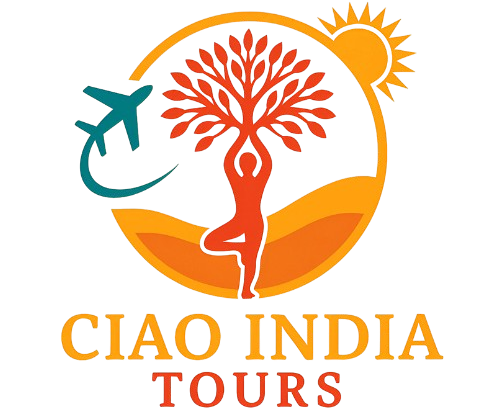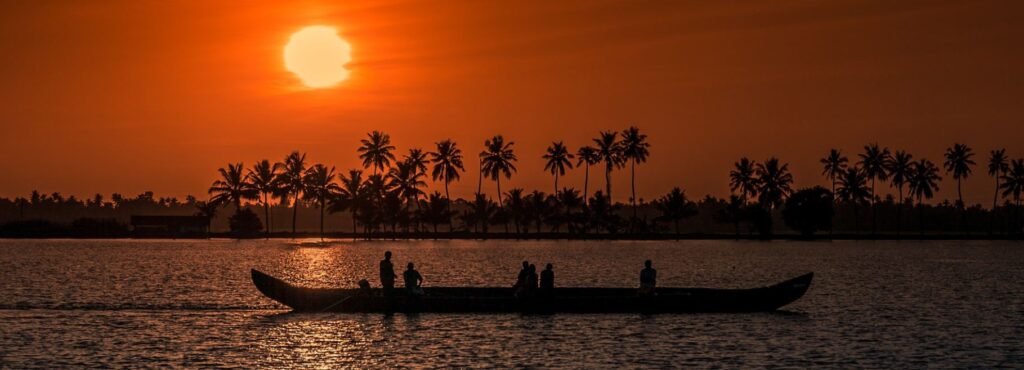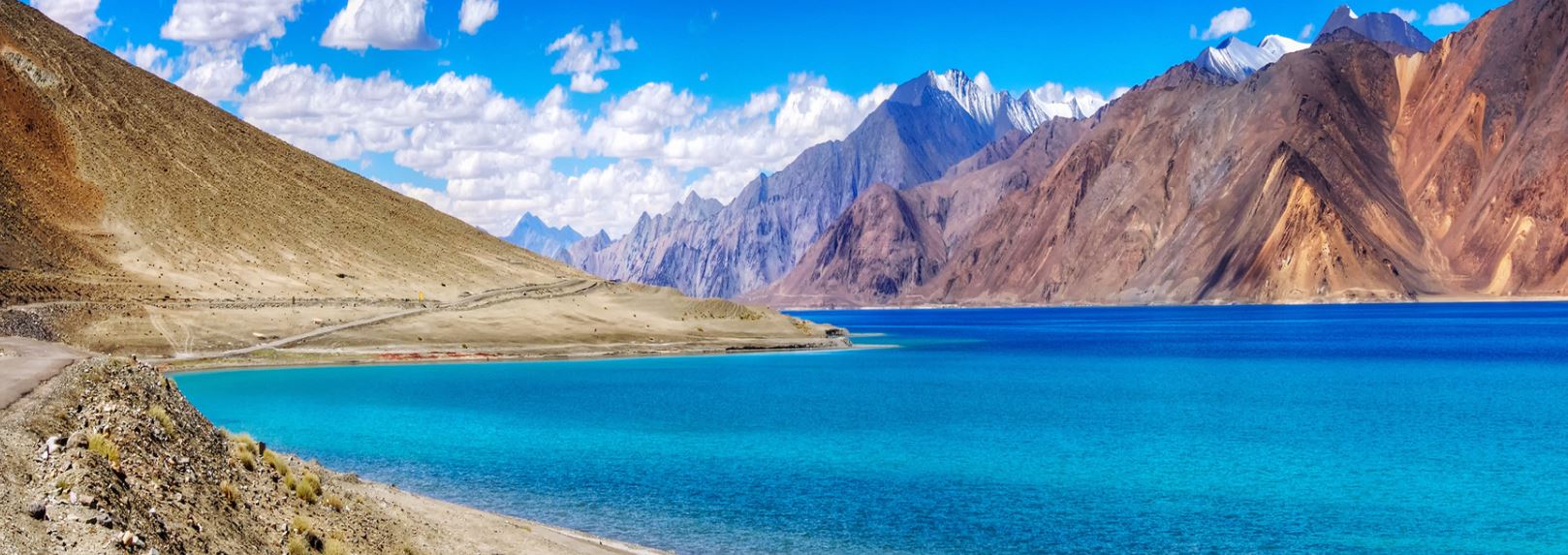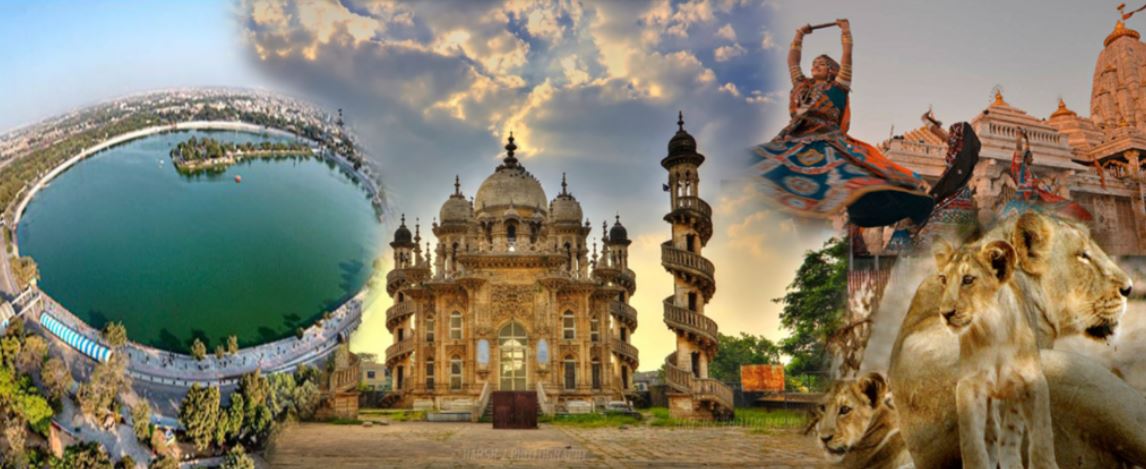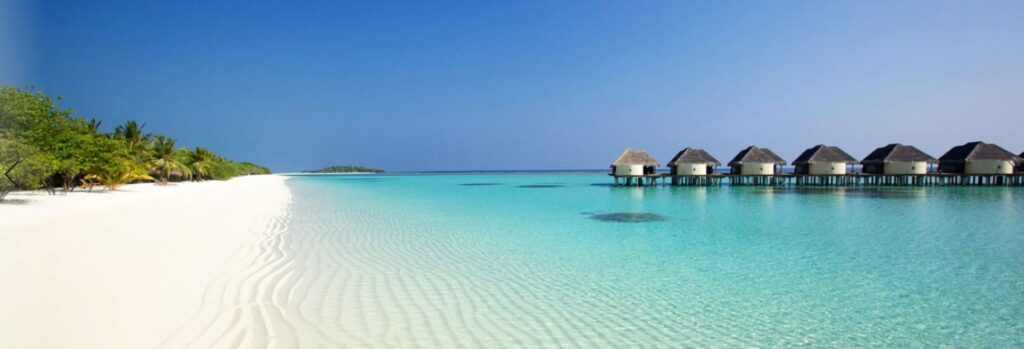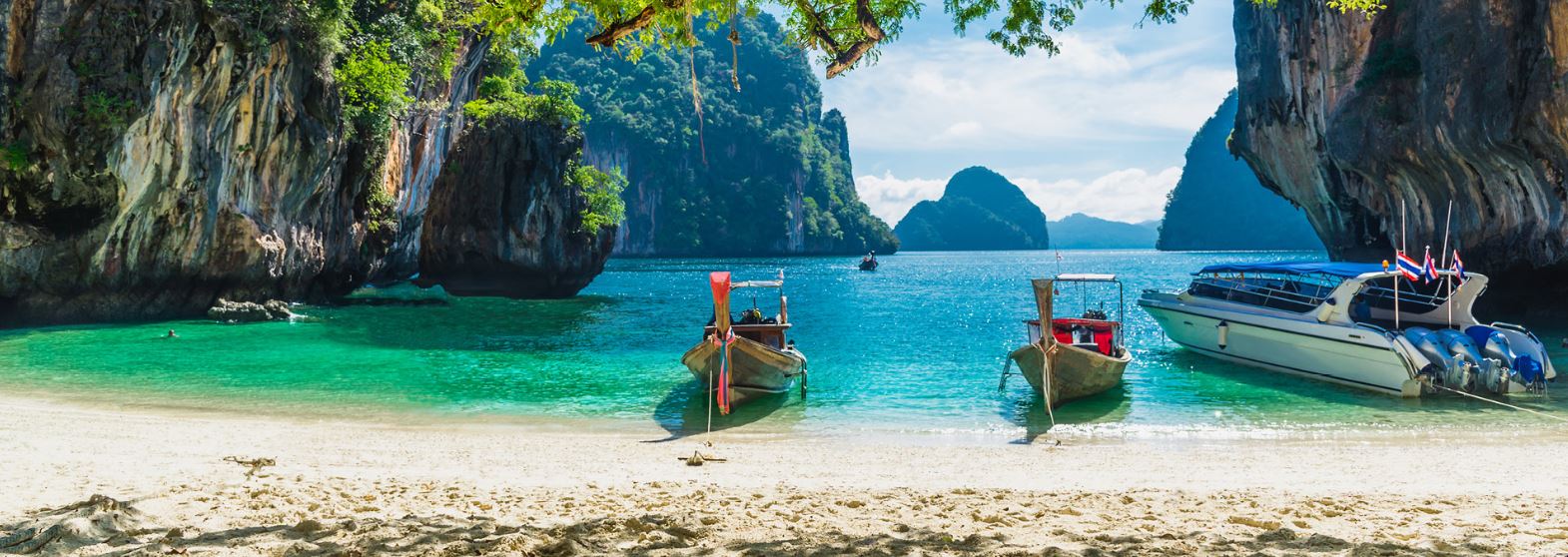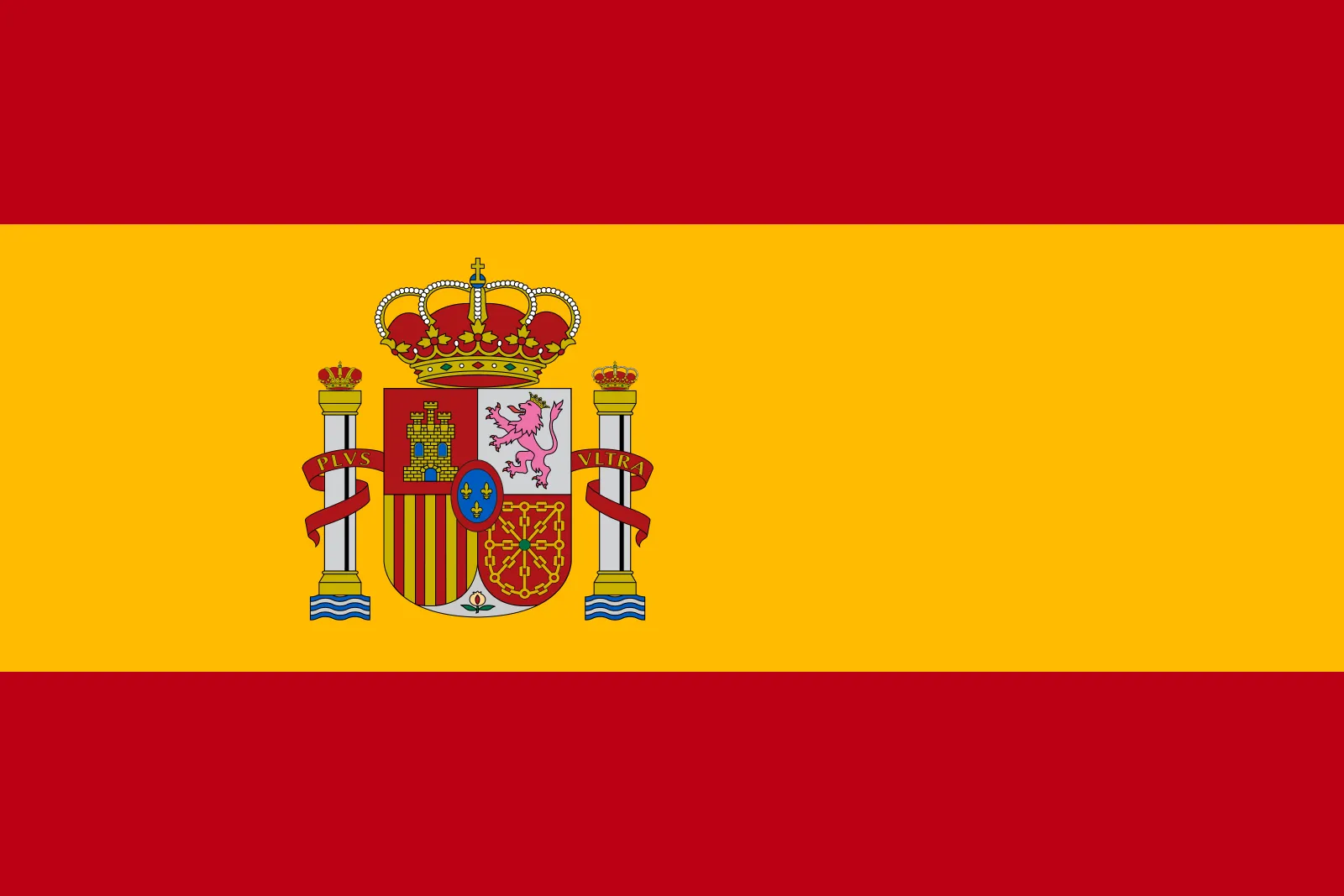All our tours are 100% customizable
Best of Tamilandu and Kerala – 16 nights/17 days
Price to be reconfirmed – 1140 Euro/pp minimum -02 persons
Chennai-Kanchipuram-Mahabalipuram-Pichavaram-Chidambaram-Kumbakonam-Darasuram-Tanjore-Trichy-Madurai-Rameshwaram-Kanyakumari-Poovar-Kovalam-Trivendrum-Kollam-Kumarakom-Alleppey-Thekkady-Munnar-Kochi
Day 01 Arrival in Chennai
Arrival at Chennai International Airport.
Once you have completed the immigration procedures and have collected your luggage, our representative will wait for you outside the Terminal
Arrival at the hotel and check-in. Standard Check-in 2:00 p.m. / Check-out 12:00 p.m.
After breakfast, continue the city tour of Chennai.
You will visit George Town's heritage walk: - from the trading post of the East India Company in the 17th century to its modern avatar as the commercial hub of Chennai. Experience, China Bazaar Road, Vishnu Temple, Kasi Chetty Charities, Mint Street, Sowcarpet, Armenian Church, Sowcarpet, Madras High Court.
Marina Beach: - Marina Beach in Chennai, along the Bay of Bengal, is the longest beach in India and the second longest in the world. This nearly 12 kilometer sandy domain stretches from Beasant Nagar in the south to Fort St. George in the north.
Kapleshwar Temple: - Initially, the temple was built in the 7th century AD. C. by the Pallavas, where the current Santhome Church is located. After its demolition by the Portuguese in 1566 AD, the Vijayanagara kings rebuilt the temple in Dravidian architectural style.
Overnight in Chennai.

Day 2 - Chennai-Kanchipuram (86 km, 2 hours 45 minutes)
After breakfast drive to Kanchipuram.
Upon arrival in Kanchipuram, transfer to the hotel to rest, visit in the evening.
Kamakshi Amman Temple: - Shaktism is based on a Hindu tradition centered on the worship of the Goddess. In the name Kamakshi, the letter "Ka" represents Saraswati (the goddess of knowledge and wisdom), "ma" represents Lakshmi (the goddess of wealth and prosperity), while "akshi" refers to kind eyes.
Gandhi Road Market: - Kanchipuram city is well known as Silk City because most of its population depends on the silk industry. Skilled and semi-skilled weavers from nearby cities like Salem, Arani, Coimbatore and Kumbakonam are also involved in the production of silk sarees.
Vaikunta Perumal Temple: - Thiru Parameswara Vinnagaram or Vaikunta Perumal Temple is a temple dedicated to Vishnu, located in Kanchipuram in the state of Tamil Nadu in southern India. Built in the Dravidian architectural style.
The Kanchi Kamakoti Peetam:- The Kanchi Kamakoti Peetam is a monastic institution for the Hindu community located in one of the Pancha Bhuta Sthalas, the city of Kanchipuram. The Pancha Bhuta Sthalas represent five essential materials for our existence, namely: Earth, Sky, Water, Fire and Air.
Overnight in Kanchipuram.
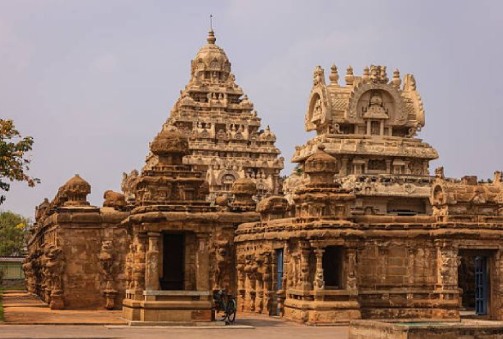
Day 3 - Kanchipuram-Mahabalipuram (91 Km, 2 Hours)
After breakfast drive to Mahabalipuram.
Upon arrival you visit The Shore Temple: - This is one of the oldest temples in South India and belongs to the second half of the 7th century AD, built with granite blocks. Since it is located on the coast overlooking the Bay of Bengal, it is called Shore Temples.
The Descent of the Ganges: - The monolith stands proudly at fifteen feet high and one hundred feet long, one of the largest and most beautiful of its kind in the world, and is smothered in lifelike carvings of humans, elephants, deities and mythical monsters, intertwined and marching in rows across every inch.
Five Rathas:- There are around nine monolithic temples in Mahabalipuram. They are the unique contribution of the Pallavas to Indian art. The monolithic temples are locally called Ratha (Chariot) as they resemble the processional chariots of a temple.
Arujuna's penance: - It is the largest in the world measuring 27 x 9 m. It has over 100 sculptures of deities, birds and beasts and saints. It is popularly called "Arjunan's Penance" as this bas-relief is believed to illustrate an example from the Mahabharata wherein Arjuna, one of the Pandavas, performed a rigorous penance with a prayer to Lord Shiva to obtain the Powerful and Divine Bow.
Transfer to the hotel.
Overnight in Mahabalipuram.
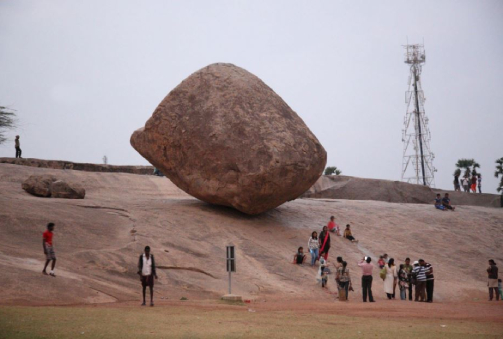
Day 4 - Mahabalipuram -Chidambaram-Kumbakonam (231 Km, 5 ore)
After breakfast, drive to Kumbakonam.
En route visit Pichavaram Mangrove Forest: - Pichavaram Mangrove Forest is located between two major estuaries, Vellar Estuary in the north and Coleroon Estuary in the south. The Vellar-Coleroon estuary complex forms the Killai and Pichavaram mangroves.
Chidambaram Nataraja Temple: - This temple dedicated to Lord Shiva called Nataraja is one of the Five Sabhas [divine stages] where Lord Shiva performed the Cosmic Dance. Chidambaram is a Pancha Bootha Sthalam, representing Akasam (Sky), one of the five elements of nature.
Upon arrival in Kumbakonam transfer to the hotel.
Overnight in Kumbakonam.
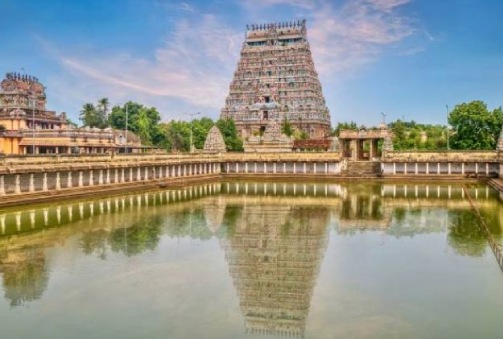
Day 5 - Kumbakkonam-Darasuram-Tanjore (98 km, 2 hours 30 minutes)After breakfast, drive to Tanjore.
Mahamaham Temple: - This is one of the many temples dedicated to Lord Shiva in Kumbakonam. The Goddess is Visalatchi. It has shrines connected to Nine Rivers and visiting this temple is considered auspicious for girls.
Bronze factory: - In fact, it is a specialized artistic tradition that is unique to the city, hence the bronze idol makers here are known as the 'bronze icons of Swamimalai'.
Enroute you visit the Darasuram, Airavatesvara Temple: - Airavatesvara temple in Darasuram is a historic divine temple filled with rich heritage and astonishing artistic splendours. One of the three ancient temples that are collectively called "Great Chola Living Temples", the Airavatesvara Temple in Darasuram, has been awarded the UNESCO heritage tag.
On arrival in Tanjore, after lunch, transfer to the hotel to relax.
Visit Tanjore:- Thanjavur is a city in the southern Indian state of Tamil Nadu. Its many temples include the 11th-century Brihadeeswarar temple, a vast Chola dynasty-era complex with frescoed interiors.
The Thanjavur Maratha Palace: - houses the century-old Saraswathi Mahal Library, with palm leaf manuscripts, and the Thanjavur Art Gallery, with bronze statues.
The Tamil University Museum: - exhibits coins, folk artifacts and musical instruments. Visit Brihadeeshwara Temple, Thanjavur Royal Palace and Art Gallery.
Brihadeeswarar Temple: - It is one of the largest temples in India and is an example of Dravidian architecture during the Chola period. Built by Emperor Raja Raja Chola I and completed in 1010 AD, the temple turned 1000 years old in 2010.
Overnight in Tanjore.
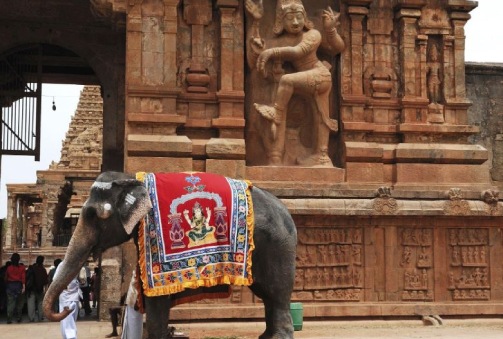
Day 6 - Tanjore-Trichy (65 Km, 1 hour) Trichy-Chettinad (82 Km, 01 hour 25 minutes)
After breakfast, drive to Chettinad.
En route you visit Trichy Sri Ranganathaswamy Temple: - Sri Ranganathaswamy Temple is located in Srirangam town in Trichy. The temple is dedicated to Lord Ranganatha, a reclining form of Lord Vishnu. The temple complex along with the surrounding area covers a total area of 156 acres.
Rock Fort: - Trichy Among the many spectacular sites to visit in Trichi, Rock Fort Temple is a must-visit. The fort is a huge rock structure built at an altitude of 83 m above sea level.
Kallanai Dam: - Kallanai Dam, also known as Grand Anicut, is an ancient dam built on the Kaveri River, located at a distance of 15 km from Tiruchirapalli. The dam was originally built by the then ruler of the area, a Chola king Karikalan, around the 2nd century AD.
On arrival visit Chettinad.
Chettinad Palace: - Chettinad Palace, located in the Sivaganga region of Tamil Nadu, is a splendid illustration of the traditional construction of the Chettinad village. Its magnificent construction dates back to the 18th century.
Chettinadu Mansion: - Chettinadu Mansion in Kanadukathan is a historic retreat. This palace has existed for more than a century and has been used as a spa since it opened its doors to the public.
Transfer to the hotel.
Overnight in Chettinad.
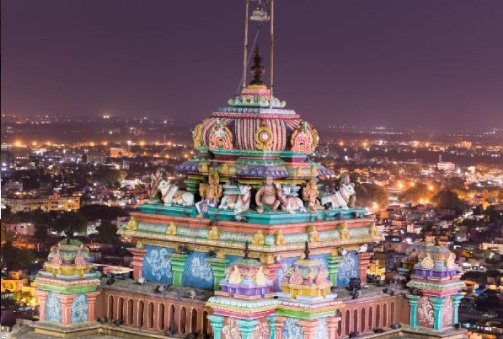
Day 7 - Chettinad-Madurai (90 Km, 2 hours)
After breakfast, drive to Madurai.
Vairavanpatti:- The temple dates back to the 19th century and is associated with many legends. Sivapurandevi and Lord Aatkondanathar are worshiped here, although other deities may also be present.
Soorakudi:- A route leading to Chettinad railway station and Kanadukathaan passes by the Soorakudi temple, which is located on the outskirts of the city, about ten kilometers from Karaikudi. The impressive temple is inspired by Soorai bushes, a species grown here for its therapeutic properties.
After visiting Chettinad, departure to Madurai.
Upon arrival visit Gandhi Museum is located in the ancient palace of Rani Mangammal. The museum brings the fight for freedom to life. The Gandhian movement is well represented as an art gallery.
Then check in at the hotel and time to rest.
In the afternoon visit the temple followed by the evening ceremony.
Meenakshi Temple: - It is dedicated to the goddess Meenakshi, a form of Parvati, and her consort Sundareshwarar, a form of Shiva. Built in the 14th century, it has four imposing towers called Gopurams and the tallest is around 170 feet tall
Flower Market: - Flower Shops where you can choose from the different varieties of flowers available and get a bouquet. The decorators can expertly sculpt the flowers into bouquets, garlands, frames, and other items.
Evening Ceremony: - Late in the evening, you will witness the amazing pooja (prayer) ceremony at Meenakshi temple. During the ceremony, the idols of Sundareshwar (an avatar of Lord Shiva) and his consort Meenakshi (an avatar of Parvati) are brought in a grand procession to the bedroom, where they are kept for the night.
Note: To visit Meenakshi Temple, you have to follow the dress code which includes half-sleeved or long-sleeved shirt/top and pants. Sleeveless dresses, shorts or shorts are not permitted. Non-Hindus are not allowed to enter the sanctum sanctorum.
Overnight in Madurai.

Day 8 - Madurai-Kanyakumari (269 km, 4 hours 20 minutes)
After breakfast, drive to Kanyakumari.
Triveni Sangam Kanyakumari: - Confluence of the Bay of Bengal, the Arabian Sea and the Indian Ocean. Meeting point and sacred bathing place in the extreme south of India.
Thiruvalluvar Statue: - The majesty of Thiruvalluvar statue that can be seen from a great distance. It is 41 meters high, with the deep blue sky and the sparkling sea in the background.
The Vivekananda Rock Memorial: - The Vivekananda Rock Memorial is a monument and a popular tourist attraction in Kanyakumari, the southernmost tip of India.
Devi Kanya Kumari Temple: - Devi Kanya Kumari is Goddess Shree Bhagavathy in the form of a teenage girl. Devi is also known as Shree Baala Bhadra or Shree Baala. She is popularly known as “sakthi” (Durga or Parvati) “Devi”.
Kanyakumari Beach: - Surrounded by the Arabian Sea, the Indian Ocean and the Bay of Bengal, this is the place where you can see three seas coming together. The experience is the spectacular view of the green sea from the blue arches.
The Sunset: - Watching the sun set over the southern tip of India is a sight to behold. Kanyakumari is located at the confluence of the Indian Ocean, the Arabian Sea and the Bay of Bengal.
Overnight in Kanyakumari.
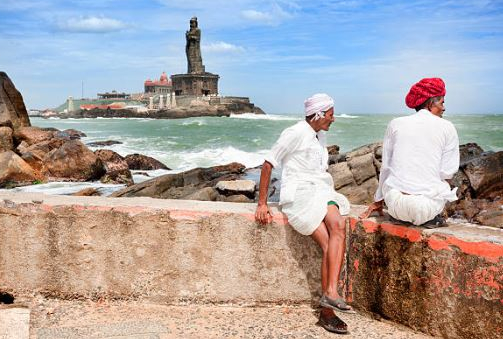
Day 9 - Kanyakumari-Poovar (66 Km, 2 hours) Poovar-Kovalam (14 Km, 20 minutes) Kovalam-Trivendrum (18 km, 30 minutes)
After breakfast, drive to Trivedurum.
On the way visit Padmanabhapuram Palace: - It is considered the largest wooden palace in India, mainly made of wood and granite. The pillar carved from a single fruit tree, the decorated Chinese chair, the knight's lamp, the Chinese vases, the Belgian mirrors and the bed made of 64 different medicinal woods are other main attractions.
Mathur Aqueduct: - Built over the Pahrali River, the Mathoor Suspension Bridge has become an important part of every Kanyakumari tour. The Pahrali River originates from the Mahendragiri Hills of the Western Ghats. It is located in Mathoor village of Thiruvattar Panchayat Union.
On the way you will visit Poovar.
Boat Ride: - On arrival, a boat rides along Neyyar Lake and the picturesque canals of the town will take you to Poovar Beach, which offers a wonderful view of the forming backwaters and golden sands.
Then we return with the boat and leave for Kovalam, arrival at Kovalam and visit.
Lighthouse Beach is one of the main tourist places in Kovalam. This pristine beach on the Arabian Sea coast is famous for its 35-metre-high lighthouse at its southern end, which offers a spectacular panoramic view of the surrounding area.
Hawa Beach: - is located approximately 1.5 kilometers from the lighthouse beach and is famous for being one of the pristine beaches of India. However, it is advisable to avoid swimming here as the water current is strong.
Upon reaching Trivendrum we visited.
The Sree Padmanabhaswamy temple (external photo stop):- dating back to the 8th century. It is one of the 108 sacred temples of Vishnu or Divya Desams in India. The Divya Desams are the most sacred abodes of Lord Vishnu mentioned in the works of the Tamil Azhvars (saints).
Overnight in Trivendrum.

Day 10 - Trivendrum-Kollam (83 km, 2 hours 30 minutes)
After breakfast, drive to Kollam.
En route, visit the Sree Padmanabhaswamy temple (photo stop) dating back to the 8th century. It is one of the 108 sacred temples of Vishnu or Divya Desams in India. The Divya Desams are the most sacred abodes of Lord Vishnu mentioned in the works of the Tamil Azhvars (saints). The presiding deity of this temple is Lord Vishnu, reclining on Anantha, the hooded serpent.
On arrival at Kollam, visit, Thevalli Palace: - A place of great historical importance, Thevally Palace is situated on the banks of Ashtamude Lake. It once served as the home of the Maharaja of Travancore, and was built under the rule of Gauri Parvathi Bai between 1800 and 1819.
Jatayu Nature Park is a rock theme park that opened on November 25, 2017. Built to promote mythology and adventure tourism, the resort features a 6D theater, a digital audio-visual hall, a cable car and a complex Ayurvedic in a cave. It is also home to countless adventure activities including paintball, laser tag, archery, bouldering, rock climbing, air rifle shooting, etc.
Transfer to the hotel.
Overnight in Kollam.
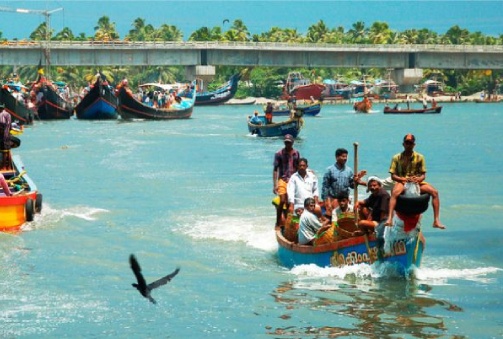
Day 11 - Kollam-Kumarakom (104 km, 3 hours 20 minutes)
After breakfast, drive to Kumarakom.
On the way we visited Kottayam and Ayemanam.
Kottayam Town is the first city in India to have achieved 100% literacy (a notable feat achieved in 1989). English education in South India actually began at the Old Seminary here in Kottayam in 1813. The first printing press in Kerala was established here (CMS Press) in 1821 by Rev. Benjamin Baily. The first university of the state (CMS College) was also started here in Kottayam in 1840.
Ayemanam: Hidden on the outskirts of Kottayam town, the small village of Aymanam has its own special story to tell. Famous for its unmatched natural beauty and abundant cultural diversity, it is another less explored treasure of God's own country. Flanked by the mighty Vembanad Lake on the western side and the mighty Meenachil River on the other, nature has blessed these parts with many gifts. Visitors love a relaxing cruise on these picturesque waters.
Upon arrival, you will go to Kumarakom Bird Sanctuary: - Kumarakom Bird Sanctuary is among the most famous bird watching spots in the country. Spread over 14 hectares, numerous species of rare birds are found in this area. Located on the banks of Vembanad Lake in Kottayam, one can see a variety of migratory birds flocking from places like the Himalayas to Siberia.
Overnight in Kumarakom.
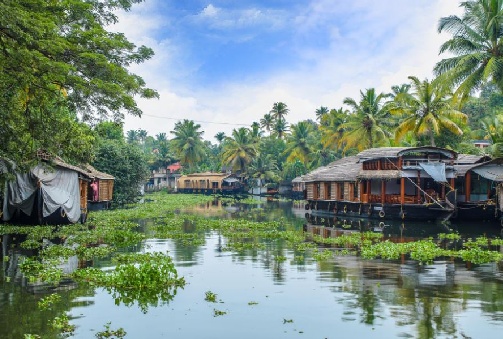
Day 12 - Kumarakom-Alleppey (32 Km 1 hour) (full board)
After breakfast, driver to Alleppy.
Arrival in Alleppy and transfer to the houseboat, rest of the day dedicated to relaxation.
Alleppey:- Popularly known as the Venice of the East, Alleppey or Allapuzha is famous for its serene backwaters and exceptionally picturesque surroundings. Houseboat cruise in Alleppey is the latest and probably the best addition to the list of ways in which you can enjoy the fascinating natural beauty of this picturesque city. This is one of the most exciting things to do in Alleppey.
Late afternoon boat ride, get off the houseboat and take a smaller boat to observe the daily life of those who live there, these shores have not changed over the centuries. It is surrounded by vast expanses of rice fields and coconut trees that sway gently in the wind.
Overnight in Alleppey with full board on a Houseboat
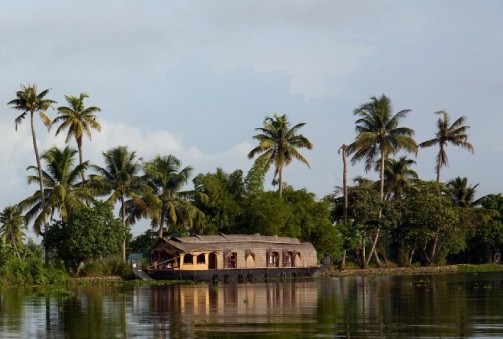
Day 13 - Alleppey-Thekkady (128 km, 3 hours 40 minutes)
After breakfast, drive to Thekkady.
Upon arrival you will visit the spice plantation: - Spices and spice plantations are something unique to Thekkady, Kerala and most of them do not miss this interesting activity.
Elephant Junction: - Thekkady, located near Kumily, is a great place to learn about elephants, ride them, bathe and shower alongside them. It is a fun and entertaining activity for children and adults.
The boat ride through the Periyar National Park and Wildlife Sanctuary has made it widely known by the name Periyar Lake. Governed by the Kerala Forest and Wildlife Department, the lake receives hundreds of thousands of foot traffic every year.
Kathakali Performance: - Kathakali is one of the major Indian classical dance forms. It is an artistic genre of "narrative work", but is distinguished by the richly colored makeup, costumes, and masks worn by traditionally male actor-dancers.
The spectacle of Kalaripayattu:- Considered one of the oldest and most scientific martial arts in the world, Kalaripayattu was developed in Kerala. Praised as the pride of Kerala, the training begins with a full body oil massage until you are limber and flexible. Feats like chattom (jumping), ottam (running) and marichil (somersault) are also integral parts of this art form.
Later return to the hotel and rest.
Overnight in Thekkady.

Day 14 - Thekkady-Munnar (91 km, 2 hours 53 minutes)After breakfast, drive to Munnar.
Upon arrival, transfer to the hotel and then visit.
Pothemed Viewpoint: Experience the wonderful views of Munnar! Take a trip to Pothamedu, a hilltop site where you can enjoy beautiful views of mist-shrouded hills and green valleys caressed by cool winds.
Pallivasal Falls, Pallivasal Falls in Munnar is a secluded yet picturesque tourist spot. These waterfalls are formed by the Muthirappuzhayar River and are among the most popular waterfalls in the area. Visit the place during monsoons and the sight of water flowing over the rocks will revive your senses.
Blossom Park: - It is a park located in one of the most beautiful places in the country. Many activities are offered here, such as boating, skating, cycling, etc. And if you want a quiet visit, admire the trees and a wide variety of beautiful flowers in the park.
Overnight in Munnar.
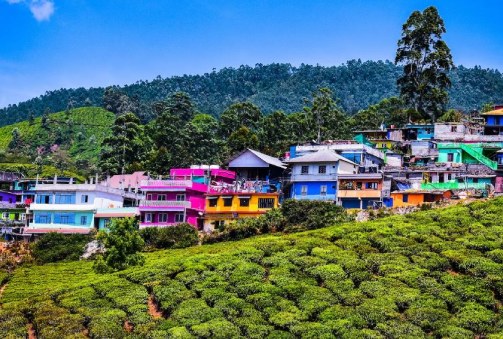
Day 15 - Munnar
After breakfast the day begins.
Tea Museum: (Closed on Monday)- Tea has played a vital role in the history of Munnar. The plantations played a very important role in attracting people to the area. Tata Tea established a Tea Museum in 2005 that features photographs and machinery chronicling the journey of tea in the area.
Echo Point – About 15 km from Munnar is the famous Echo Point. Popular for its natural eco phenomenon, you can always find the area packed with enthusiastic visitors throughout the year. At an altitude of about 600 feet, people love to stroll through the lush greenery surrounding the place. It is an ideal place for picnics.
Mattupetty is among the most visited destinations in the tourist hotspot of Munnar. It is a nice picnic spot that regularly attracts visitors. People love visiting the dam and lake here and families can regularly be seen enjoying a beautiful afternoon in the area.
Photo Point: - While most of Munnar is photogenic, Photo Point is doubly so. Just 3 km from the main market of this hill station, this site is a favorite among photographers. Surrounded by the Tata Tea Gardens of Kanan Devan Hills and a variety of silver oaks, this place is located just off the main road.
Kundala Dam: - About 20 km from Munnar, Kundala Dam is a picturesque tourist spot. The dam is built on the Periyar River and is surrounded by the green mountain range of the Western Ghats. The area also has cherry trees, which bloom twice a year, adding to the beauty of the place.
The Munnar Rose Garden is a dreamland for rose lovers. This garden contains roses of almost every color. The Rose Garden is home to not only roses, but also hundreds of rare varieties of other flowers and herbaceous plants. The tea, cardamom and vanilla plantations behind the Rose Garden are very attractive and a lovely place for a quiet walk. Seasonal tropical fruits such as strawberries, lychee, rambutan, amla and vegetables such as cauliflower, cabbage, potatoes and beans are grown here.
Overnight in Munnar.
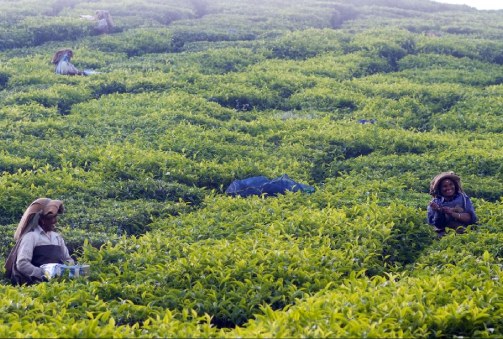
Day 16 - Munnar-Kochi (127 km, 3 hours 40 minutes)
After breakfast, drive to Kochi.
The Mattancherry area: - has people of different languages and ethnic identities. Churches, agraharams, mosques and a synagogue coexist in the area, along with buildings from the colonial era, which bear witness to a vibrant past and a harmonious present.
Chinese nets: - Chinese nets made of teak wood and bamboo poles work on the principle of balance. Each structure, approximately 10 m high, is fixed to the beach and has an overhang with attached netting that extends over an area of approximately 20 meters.
Jewish Street: - you can choose between curiosities, antique tableware, carved wooden furniture, bronze and brass sculptures, remains of traditional houses and jewelry. Antique sellers love to chat and keep you informed about the origins of the items and their shops.
The Synagogue: (Closed on Friday and Saturday)- The Paradesi Synagogue, in a corner of the Jewish City, is more than a hundred years old and houses many rare antiquities. The synagogue, which attracts many visitors, adds to the picturesque charm of Mattancherry.
Dutch Palace: (Closed on Saturday) Although the Dutch Palace was called that, it was the Portuguese who built it. What the Dutch did was just a cosmetic restoration and repair. During the first decades of the 16th century, the Portuguese looted many temples in Kochi.
Cathedral Basilica - The Holy Cross Cathedral Basilica in Fort Kochi, Kochi, is one of the nine basilicas in Kerala. Counted as one of the historical buildings of Kerala, this church is one of the most beautiful and impressive in India and visited by tourists throughout the year
Dhobi Khana is the place where the Tamil-speaking Vannan community performs laundry work, the profession traditionally practiced by the community. This practice of the Vannan community dates back to the colonial period.
Overnight in Kochi.

Day 17 - Kochi-Next Destination
Transfer to Kochi airport.
Ciao India Tours wishes you a happy journey.
Inclusions
- 16 nights’ accommodation in 3 star/Heritage hotels, with breakfast, including all existing taxes.
- All transfers from the airport to the hotel and vice versa.
- Meet and assist on arrival by our representative at the airport.
- All trips scheduled with air conditioning sedan car.
- Full board in Alleppy on the boat.
- Shikara (traditional boat) ride in Alleppey.
- One bottle of water per person every day.
- All taxes included.
- The toll, the parking, the fuel, the driver's accommodation.
Exclusions
- Visa, International flight, Medical insurance, cancellation/modification of flights, trains, Alcoholic beverages, Tip, Tour guide, Tickets to monuments and activities, Personal expenses, Camera, etc.
- Everything that is not part of the inclusions.
